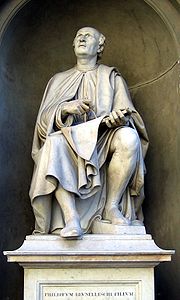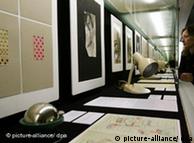flip
Hoping to Make Phone Buyers Flip
These days, designing a new mobile phone can seem like something out of an episode of “Dr. Phil.”

Rhys Newman is the head of a team at Nokia charged with forecasting what consumers will want next year, and into the future.

Raphael Grignani, a designer, at Nokia's design center in California. His research group is the first of its kind at Nokia.
Readers' Comments
"Emotional attachment to a phone or any features therein is a sign of deep, deep sickness. Put it down and go for a walk."SB, Boston
LG Electronics, the maker of the Chocolate and Voyager phones, begins by asking focus groups to keep a journal, jotting down feelings about features they like most. Participants can call a toll-free number to share their emotions about the phone they are testing. And sometimes they are asked to draw pictures that represent their mood when they hold the phone.
“Our job is to be behaviorists and psychologists,” said Ehtisham Rabbani, LG’s vice president for product strategy and marketing. “We constantly have to be reminding ourselves that we tend to be geek types and our customers are not.”
Executives and industry analysts say it has become more important than ever to understand the psyche of consumers and why they pick one phone over another. That’s because LG, Motorola, Nokia and others are in a fierce battle to please finicky customers as new entrants like Apple, with its popular iPhone, seek to upend the traditional mobile phone business.
At stake are millions of dollars in profits and the fortunes of entire companies. Like fashion or entertainment, the cellphone industry is increasingly hit-driven, and new models that do not fly off the shelves within weeks of their debut are considered duds. The most gadget-conscious shoppers buy new phones every nine months, twice as fast as they did a few years ago. And teenagers, one of the fastest-growing markets, are especially quick to dump a brand if it loses popular appeal.
“The world has changed,” said Jeremy Dale, who is in charge of marketing for mobile devices at Motorola, where fortunes tumbled with the decline of its once popular Razr. “There is more relevance in what other consumers say than what the company is saying.”
Cellphone company executives are so concerned about these trends that, at the largest mobile phone trade show in Barcelona this month, panelists debated how their industry could better understand how to make customers happy, as Apple seems to do. One panelist suggested that cellphone makers tap into consumers’ “neural networks”, while another said they should understand their subliminal needs.
The speed of innovation — or rather, consumers’ appetite for it — makes it harder for companies to compete. Ten years ago, wireless carriers and mobile phone makers could thrive by offering consumers two or three new options a year. But now, with nearly 80 percent of Americans owning a mobile phone and hundreds of models available, a company’s fate can turn as quickly as a teenage girl’s temperament.
Mr. Dale says companies like his are forced to give consumers what they want even before they know they want it. Motorola was a market leader in late 2004 when it introduced the ultraslim Razr. But when the company failed to create a worthy successor, its stock plummeted and investors revolted.
Motorola’s share of handset sales in the United States dropped to 30 percent by the fourth quarter of 2007, from 35 percent in the first quarter, according to the NPD Group, which tracks sales. Now Motorola is considering a breakup of the company.
Different companies, of course, take different approaches to understanding consumer tastes. Along with extensive focus-group testing, LG executives regularly attend home and design shows looking for broader trends in popular culture.
Mr. Rabbani said that last year he and his colleagues noticed that natural materials like wood, metal and leather were popular among furniture and appliance makers. So when designing the Venus, which LG introduced in late 2007, designers molded the plastic back to give it the texture of grainy leather. Verizon and LG declined to give sales figures for the phone.
But whatever the cultural inspiration, if a new phone does not catch on quickly, it is not likely to catch on at all. Even interesting designs do not necessarily spell success. Helio, a joint venture of EarthLink and SK Telecom of South Korea that developed the Ocean and other phones for the youth market, is reported to be looking for a buyer for its business, too.
“The strongest marketing tool is the first 20,000 people who buy the device,” Mr. Dale of Motorola said. “If they like it, they will tell their friends.”
The focus on the consumer mindset can be intense. Three weeks ago, a small team of Nokia executives had their first gathering at a farmhouse 30 miles north of Santa Barbara, Calif., for a three-day retreat to discuss consumer behavior.
The group is the first of its kind at Nokia, the world’s No. 1 seller of mobile phones, bringing together 14 designers and researchers from California and Helsinki, where the company is headquartered. Their charge is to tell Nokia’s top executives not only what consumers will want next year, but 3 to 15 years from now.
“We have the ability to clarify the needs of real people,” said Rhys Newman, who heads the team.
A case in point: A few years ago one of Nokia’s designers visited China and noticed that people there used the light from their mobile phone screens to illuminate dark hallways so they could more easily unlock their doors. After he discussed his observation with other Nokia designers, Nokia added a penlight to some models.
“Design used to be inconsequential: just make it pretty, make it sell,” said Mr. Newman, who, along with three members of his team, was interviewed at Nokia’s design center near a strip mall in downtown Calabasas, north of Los Angeles. Now, he said, “we have to think about human fundamentals.”
Two and a half years ago, Nokia executives asked Mr. Newman and some colleagues to explore what Nokia’s strategy should be as consumers began to personalize their cellphones. Among those working on the project were Jan Chipchase, a human behavior researcher for Nokia who lives in Tokyo and travels the world studying culture and communication, and Andrew Gartrell, a 14-year veteran designer.
On a trip to Ghana last year, a colleague of Mr. Chipchase took a photograph of the crushed front panel of a Nokia 1100 mobile phone that had been discarded in the middle of a dusty road.
Mr. Gartrell, who had helped design the 1100, was unnerved by the image; the phone had just come out in 2003. Mr. Newman said Nokia’s designers and researchers became fixated on the notion that the company makes 16 mobile phones a second and that many of them end up in the garbage heap.
So instead of examining the personalization of phones, Mr. Newman and his fellow designers suggested that Nokia explore how to make more environmentally sound products — or, as Mr. Gartrell put it, “How do we turn waste into something beautiful?”
This month Nokia introduced Remade, a prototype of a mobile phone made entirely out of recycled aluminum cans, old tires and plastic soda bottles. As part of the same initiative, it has also developed a more efficient battery.
Nokia has not announced when the phone or battery will go on sale and is still working on their designs. If they arrive soon, though, Nokia’s marketers could try to ride the wave of eco-friendly products, like the increasingly popular Prius, that have captured consumers’ fancy.
When asked if they felt pressure to design new phones more quickly in an increasingly competitive market, Mr. Chipchase responded with a quizzical stare. “Why do you want to innovate faster?” he asked. “Are you innovating something gimmicky just to sell a product? Or is it saving the planet you are after?”
Not every company lets their designers be so idealistic. Some are more focused on investor expectations for profits than lofty research. “There is an awful lot of pressure to keep the wheels turning instead of putting money into new innovation and development,” said Rita Gunther McGrath, a professor at Columbia Business School who studies innovation at big companies.
And consumers are not the only demanding clients that cellphone makers must please. Wireless carriers like AT&T and Verizon are also customers. In 2004, for example, on the heels of the success of the Apple iPod, every major cellphone maker was experimenting with how to combine a music player with a mobile phone.
Steve McGaw, a senior vice president for AT&T’s wireless operations, said his company, then named Cingular, talked to Motorola about what model it could offer. Cingular was given two choices: the Rokr, which stored 100 songs and was the first mobile phone to work with Apple’s iTunes software, or the popular Razr, which would not incorporate a music player for another year.
Mr. McGaw said AT&T chose the Rokr because Motorola could deliver it quickly. But the phone was criticized for its lackluster design. It was not until Apple introduced the iPhone that consumers embraced such a combination.
AT&T abandoned the Rokr and now offers the iPhone exclusively in the United States. “At the end of the day it’s a judgment call,” Mr. McGaw said. “We don’t always get it right.”



























